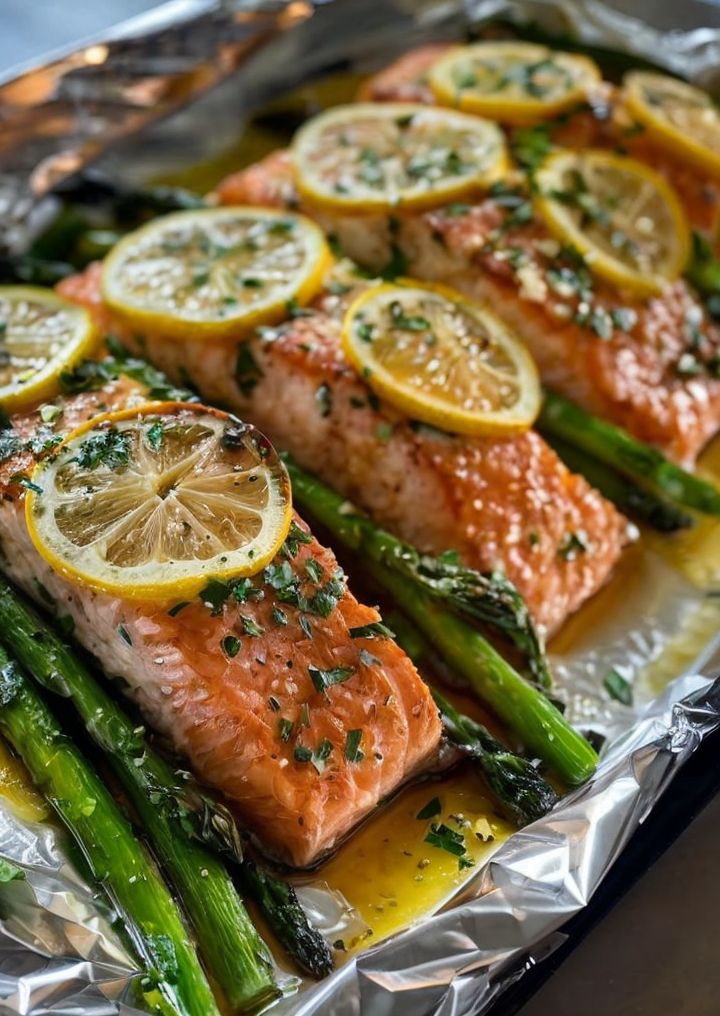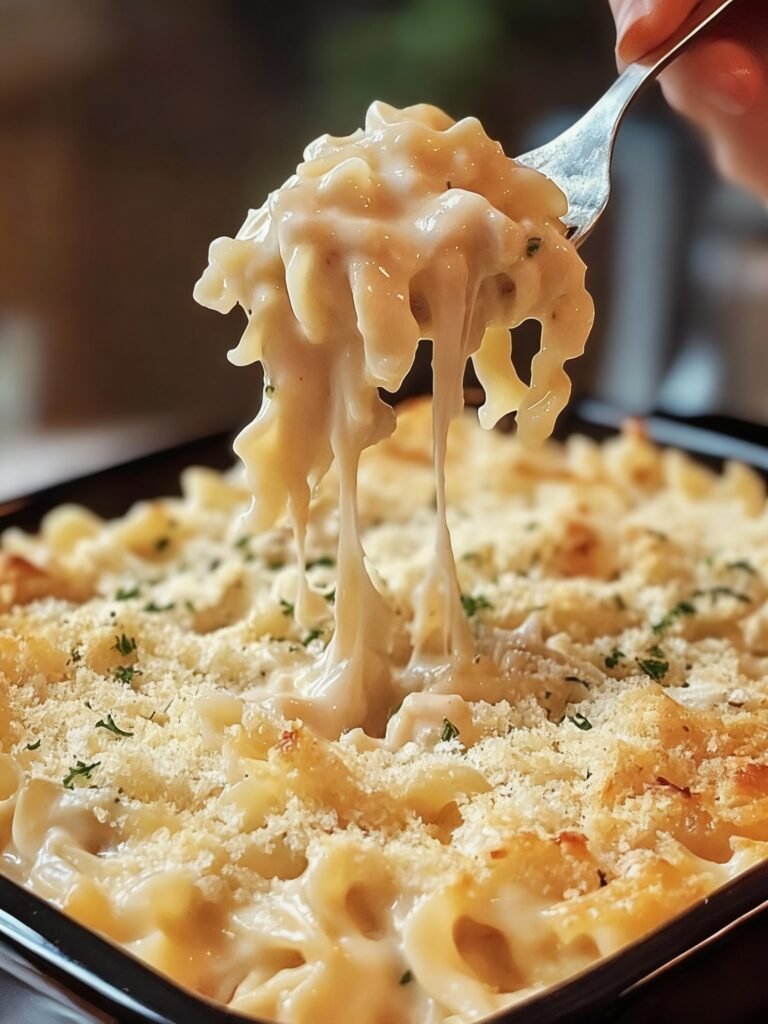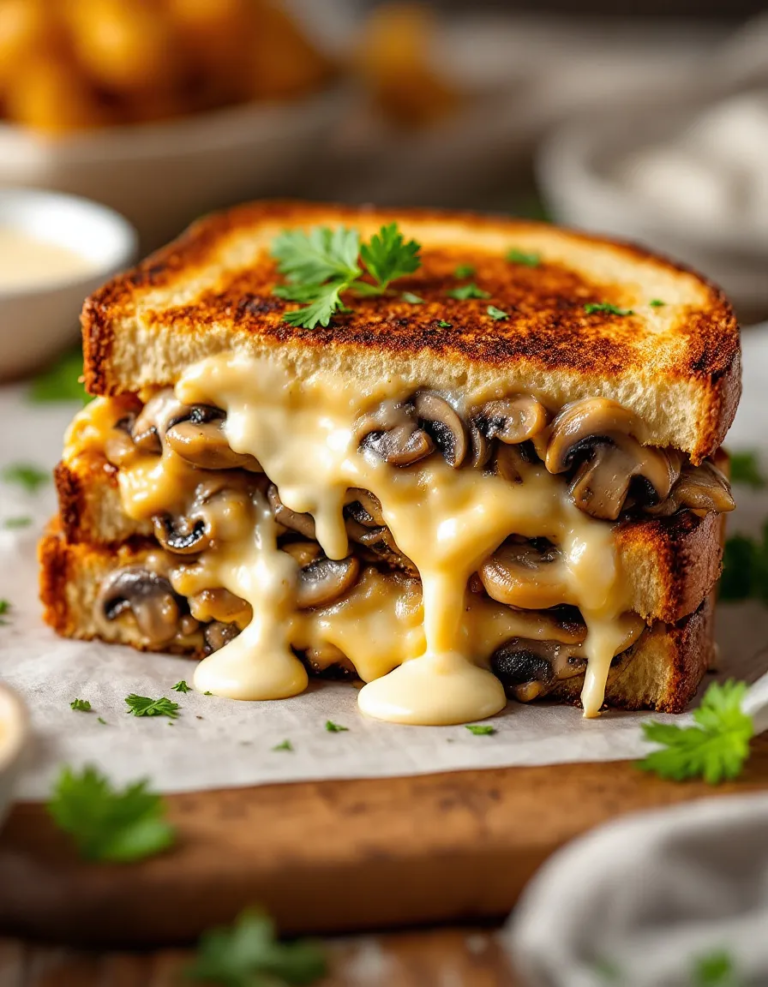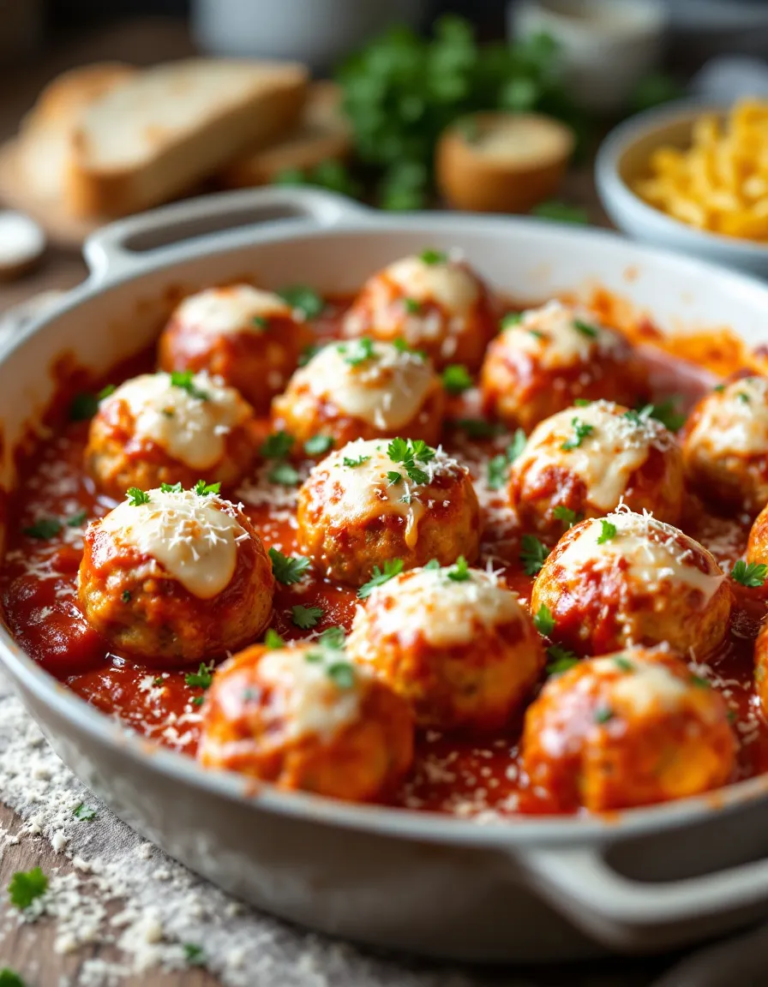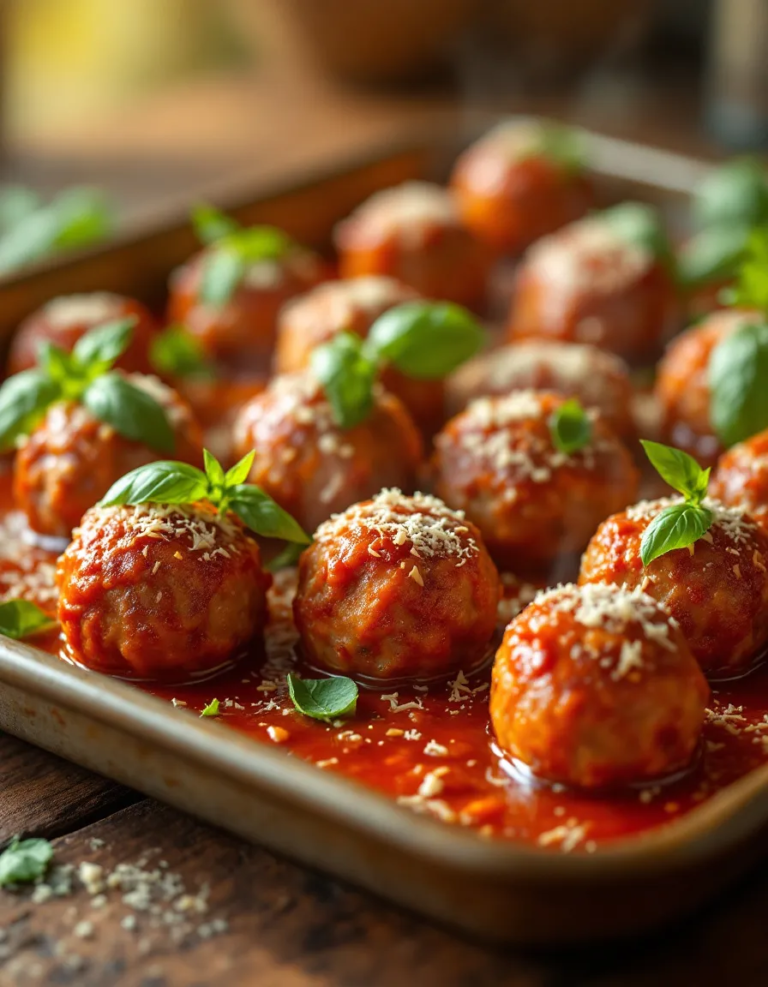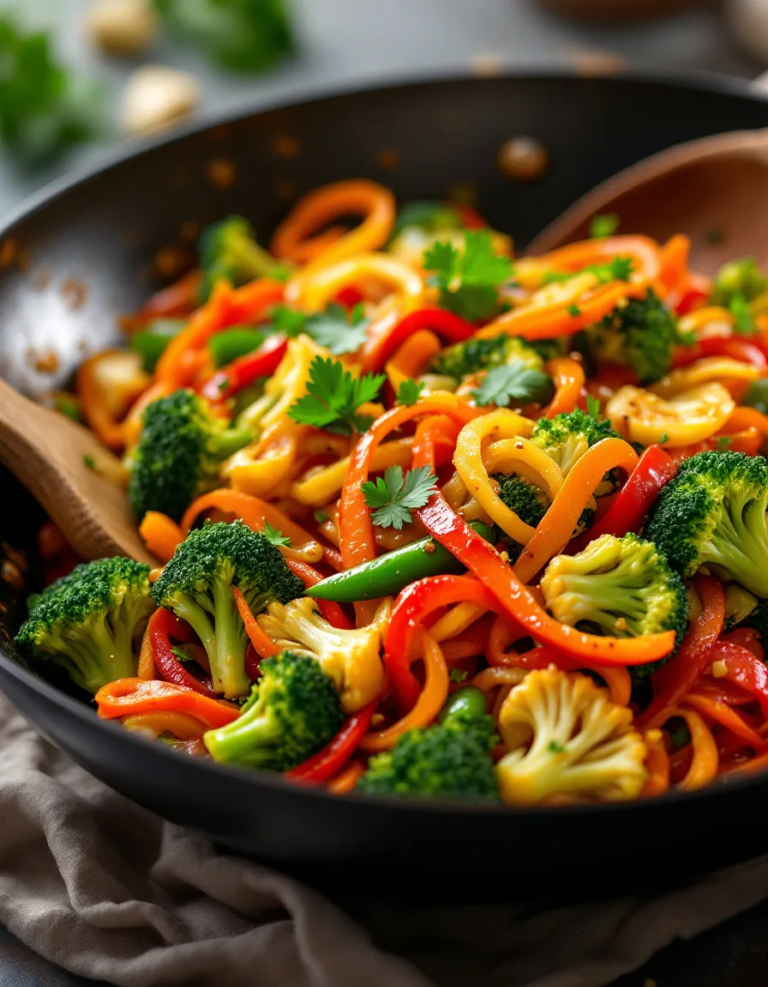Ultimate Baked Salmon in Foil with Asparagus and Lemon Garlic Butter Sauce (Ready in 30 Minutes)
Baked Salmon in Foil with Asparagus and Lemon Garlic Butter Sauce: A Delightful and Healthy Dish
Imagine a healthy, delectable dish that’s bursting with flavor while being incredibly easy to prepare. This Baked Salmon in Foil with Asparagus and Lemon Garlic Butter Sauce is just that! It combines rich and succulent salmon with the earthy crunch of asparagus, all enveloped in a tangy, aromatic lemon garlic butter sauce. Perfect for those who appreciate simplicity without sacrificing taste, this recipe dances on your taste buds and fills your kitchen with the most inviting aromas. Whether you’re just beginning your culinary journey or you’re a seasoned chef, the ease and elegance of this recipe will appeal to everyone.
Quick Recipe Highlights
- Flavor Profile: Brimming with the fresh zing of lemon balanced with savory garlic and buttery smoothness.
- Texture: A perfect harmony of the flaky, tender salmon with the crispness of roasted asparagus.
- Aroma: Delivers an enticing aroma of garlic and lemon mingling with buttery goodness that fills the kitchen.
- Visual Appeal: A vibrant appetizing look with pink salmon and bright green asparagus pops that captivate the eye.
- Skill Level Needed: Simple techniques make it accessible even for the novice cook.
- Special Equipment: Aluminum foil for wrapping, a baking sheet for ease of transfer, and a sharp knife for even slicing.
Recipe Overview
- Difficulty Level: Chosen as easy due to straightforward steps that require minimal effort and specialize in the basics.
- Category: Perfect for dinner options that offer both health and taste without extensive preparation or exotic ingredients.
- Cuisine: This recipe blends influence from Mediterranean diets known for their heart health benefits and vibrant flavors.
- Cost: Relatively low-cost meal with salmon and asparagus often being more affordable when in season, ensuring no surpassing budgets.
- Season: Ideally prepared in the spring or summer when asparagus is at its peak quality, enhances fresh taste.
- Occasion: Great for family dinners, casual gatherings, or even a quick weeknight meal where nutrition and taste are at the forefront.
Why You’ll Love This Recipe
One of the greatest appeals of this baked salmon in foil recipe is its fantastic flavor combination. The buttery richness of the salmon perfectly complements the bright, zesty lemon and aromatic garlic seasoning. The taste is sophisticated yet comforting, providing a burst of flavor with each bite. The asparagus offers a satisfying crunch that contrasts with the tender, flaky fish, while the indulgent butter sauce ties all the elements together harmoniously. You’ll surely find yourself reaching for a second helping!
Not only will your taste buds be tantalized, but you will also appreciate this recipe for its convenience. With minimal prep time required, you can have this healthy meal ready in just 30 minutes. There’s something truly satisfying about creating a restaurant-quality dish in the comfort of your own kitchen without all the fuss. The use of foil ensures that the cleanup is also minimal, making it perfect for any weeknight dinner.
On top of its mouthwatering taste and ease of preparation, this dish boasts numerous nutritional benefits. Salmon is a powerhouse of omega-3 fatty acids, vital for heart health, while asparagus offers a good source of vitamins A and C, as well as iron and fiber. This makes the recipe not only delicious but highly nutritious, supporting a balanced diet.
This Baked Salmon with Asparagus is a crowd-pleaser in any social gathering. Whether hosting a dinner party or cooking for family, its rich flavors offer a gourmet experience that is impressive, yet effortlessly prepared. You’ll enjoy watching your guests delighted as they discover the exquisite taste of the dish, adding a memorable touch to the dining experience.
Lastly, this recipe is cost-effective, making delightful dining accessible for every home cook. Salmon’s price can vary, but even affordability doesn’t impede on its nutrient-rich profile and succulence. With staple ingredients like lemon and garlic and seasonal asparagus, cooking this meal is both a treat and budget-friendly, perfect for anyone looking to enjoy wholesome food at low costs.
Historical Background and Cultural Significance
Salmon has long been a staple in the diets of coastal communities, representing both sustenance and a symbol of wealth and prosperity. Traditionally, salmon was smoked or grilled over open flames, methods still cherished in various cultures today. Combining nutritional value with versatility, it’s no wonder that salmon holds a revered spot in the culinary world.
Particularly in Mediterranean cuisines, fish baking in foil is common, utilizing herbs and citrus to enhance the natural flavors of the fish without overpowering it. This particular recipe draws inspiration from the Mediterranean region, focusing on health and taste, echoing ancient culinary styles that brought people together around simple yet rich meals.
Asparagus, too, has a storied past, having been enjoyed for millennia since the age of the Pharaohs in Egypt. A symbol of spring and renewal, asparagus has been cherished for its tender flavors and aesthetic appeal. The pairing of asparagus with salmon isn’t just a modern culinary innovation but rather a testament to its timelessness.
Over the years, the ingredients in this recipe have been adapted and modified across different regions, embracing local elements and traditions. From the Nordic variations that might introduce dill-based sauces to Americanized versions prioritizing speed and efficiency, each has left a unique mark on what we now enjoy as this salmon dish.
Ingredient Deep Dive
Salmon is a beloved fish packed with omega-3 fatty acids and rich protein, essential nutrients that support heart health and cognitive function. Historically, it has been a primary protein source for many coastal communities like the Pacific Northwest Native Americans. When selecting salmon, prioritize wild-caught varieties for better taste and sustainability. Always store it in the coldest part of the refrigerator and consume within two days for uncompromised flavor. If you’re out of salmon, trout is a great substitute, offering a similar flaky texture and mild flavor.
Asparagus offers a delightful crunch and is highly regarded for its rich supply of vitamins A, C, and K as well as folate. This noble vegetable originated around the Mediterranean and was praised by ancient civilizations for its perceived medicinal properties. Choose firm, vibrant green spears, avoiding any that appear woody or limp. When storing, ensure asparagus is kept cool and damp, standing upright in a little water like a flower bouquet. Broccoli can be a substitute when asparagus is not in season.
Common Mistakes to Avoid
- Overcooking the salmon can dry it out quickly, so always monitor your cooking times closely for perfect tenderness.
- Under-seasoning the dish may not bring out the flavors thoroughly. Be generous yet balanced with your lemon and garlic.
- Using thin foil can lead to sauce leaks. Opt for heavy-duty aluminum foil to secure the juices.
- Not allowing the oven to preheat fully can affect cook times and texture consistency.
- Avoid overcrowding the foil packet; give ample space for heat circulation and even cooking.
- Not trimming the asparagus properly can result in tough, inedible ends. Always ensure a clean-cut is made before cooking.
- Skipping the resting time post-cooking; let the salmon relax in its foil to intensify its flavors before serving.
- Using cold butter directly can make mixing tricky; always soften your butter beforehand.
Essential Techniques
Mastering the art of wrapping in foil is key to this recipe. Ensuring a tight seal traps heat and moisture, resulting in evenly cooked and tender fish. Practice folding the foil’s edges securely to prevent any leaks and enhance the cooking process.
Understanding the importance of timing is crucial when baking salmon. Pay close attention to the appearance: a well-cooked piece turns opaque with a slight, light pink color inside. Familiarizing yourself with the visual cues guarantees perfection.
Pro Tips for Perfect Baked Salmon in Foil
Season your salmon liberally with salt and pepper to enhance its natural flavors and ensure a balanced taste profile, alongside the zesty sauce enhancing every layer.
The freshness of ingredients is paramount: choose the freshest asparagus for optimal flavor and crispness while enjoying the buttery dish’s contrast.
Divide and conquer by assembling all components, such as herbs and lemon slices, in advance to streamline cooking and maintain a relaxed process.
Preheat your oven and place the foil packet on a baking sheet for easy transferability and additional support against piercing or rupture.
Let the salmon rest in its foil for a few minutes after pulling it from the oven. This allows the flavors to meld, enhancing the eating experience.
For those inviting an extra flavor dimension, consider adding a pinch of red pepper flakes for gentle heat, enhancing the savory allure of garlic and lemon.
Variations and Adaptations
Regional variations offer numerous takes on this recipe. For instance, introducing a miso glaze can provide a Japanese touch, bringing depth and umami to the salmon. On the other hand, Italian preparations might include a sprinkle of Parmesan for a cheese-infused crust.
Seasonal adaptations like replacing asparagus with summer squash or winter root vegetables ensure the dish remains diverse throughout the year while accompanying flavors adapt to various produce peaks.
Dietary modifications can be made by using dairy-free alternatives for the butter sauce, such as coconut oil or avocado oil, catering to lactose-intolerant or vegan individuals without compromising flavor.
Exploring various herbs or adding dill, rosemary, or thyme can craft distinct flavor profiles. The possibilities are endless, allowing for tailor-made experiences for each palate.
For those seeking a smoother texture, consider a final step blending the butter sauce for a silkier consistency. This elevates the dish’s presentation, taking it from simple to sophisticated.
Serving and Presentation Guide
To achieve a visually arresting presentation, consider a minimalist approach, allowing the food’s natural colors to shine. Plate the salmon atop a fan-shaped arrangement of asparagus, a testament to careful preparation.
Garnishing becomes a light, creative exercise; a hint of fresh parsley or dill enhances freshness, while a lemon wedge invites guests to add further acidity, emphasizing the dish’s brightness.
Traditional accompaniments of rice or quinoa provide a satisfying base, allowing juices to soak in for additional flavor, creating a complete, well-balanced meal that delights all.
Experiment with modern serving approaches by deconstructing the dish, presenting the salmon separately with asparagus in small, artful portions alongside differing sauces.
Maintain appropriate temperatures during serving. This dish is best enjoyed warm, highlighting the buttery sauce’s qualities and offering the salmon’s freshest taste.
Mindful portion control ensures everyone’s enjoyment without overwhelming diners, promoting both balanced nutrition and an elegant, composed dining experience.
Wine and Beverage Pairing
This Baked Salmon and Asparagus with Lemon Garlic Butter Sauce pairs beautifully with white wines like a crisp Sauvignon Blanc or a buttery Chardonnay, which complement the dish’s rich, zesty notes.
For a non-alcoholic option, consider sparkling water with a twist of lemon or lime, offering a refreshing counterpart to the buttery sauce, enhancing the overall zest.
When introducing coffee or tea, lighter variants like a mild green tea provide a subtle companion without overshadowing the dish’s flavors, maintaining its delicate essence.
Serve beverages chilled at ideal temperatures to ensure that they accentuate the dish rather than competing with it, each sip cleansing the palate for the next delightful bite.
Facilitate self-service with unobtrusive setups and pairing suggestions, encouraging guests to engage in flavor exploration that complements their unique preferences.
Storage and Shelf Life
Store any leftover salmon and asparagus in an airtight container, ensuring freshness and preventing absorption of fragrancies from other foods in your refrigerator.
Keep your dish at cold temperatures; ideally, consume it within two days for the best flavor experience. Always check that the texture remains intact and flavors are as intended.
Monitoring temperature is important to guarantee food safety and quality; the use of a food thermometer can assist in verifying proper reheating to kill any lingering bacteria.
Containers with tight seals or glass Pyrex-type dishes lend themselves well to maintaining the original flavors and minimizing unwanted odors or moisture loss.
Watch for spoilage signs such as a sour smell or discolored flesh. Reheat leftovers gently, either in the oven or microwave, ensuring that you retain moisture and texture without over-drying.
Freezing is possible but may impact texture, so if necessary, consume within the appropriate thaw and reheating guidelines, ensuring edible quality.
Make Ahead Strategies
This dish’s preparation timeline allows for advance steps, such as mixing and storing the butter sauce a day prior, ensuring an easier assembly on cooking day.
Preserving quality between stages requires proper refrigeration, especially after preparing components like cutting asparagus or prepping salmon.
Prepping in advance is beneficial but always consider the impact; for example, lemon acidity intensifies over time, exciting but sometimes overwhelming flavors, so calibrate wisely.
When assembling, wait until shortly before baking to combine ingredients, retaining freshness, especially with volatile essential oils found in citrus fruits and herbs.
Reheat with gentle consideration for all elements, preferring oven warming to maintain textures rather than faster microwaving that might change the dish’s character.
Additions of fresh elements like parsley or zest should be reserved until just before serving, offering brightness that entices guests and enhances the final taste profile.
Scaling Instructions
Effortless halving can be achieved with this baked salmon in foil recipe. Just reduce ingredient measurements while ensuring seasoning and flavors remain nicely balanced.
When doubling or tripling the recipe, use proper scaling instruments and larger cookware, mindful always of nutritional proportions and final taste accuracy.
Scaling may also introduce equipment adjustments like using multiple baking sheets to evenly distribute heat, maintaining optimal cooking.
Revised timing is advised, particularly when baking larger amounts. Patience ensures that the salmon and asparagus cook thoroughly without unevenness.
Storage adjustments for larger batches become crucial; consider vacuum sealing to secure freshness and taste, extending longevity.
Nutritional Deep Dive
Salmon offers a comprehensive macro profile rich in healthy omega-3 fats crucial for maintaining good cholesterol levels, enhanced brain function, and heart health.
On the micronutrient level, vitamin D, selenium, and potassium abound, promoting bone health, resistance to oxidative damage, and electrolyte balance, respectively.
Asparagus delivers vitamins A and C, an antioxidant powerhouse supporting eye health and immune function, and through its unique fibers, contributes to digestive health.
Dietary considerations showcase salmon as a lean protein supporting muscle development while simultaneously presenting low-fat content, attractive to weight-conscious diets.
Portion analysis reveals how measured meals promote satisfaction without overconsumption, maintaining one’s health-focused endeavors while savoring a luscious dish.
The coupling of weight management tips, such as including sides like leafy greens, ensures well-rounded meals that delight without the dietary detriments of overindulgence.
Dietary Adaptations
For those requiring gluten-free adaptations, rest assured this dish is naturally inclusive, ensuring full enjoyment without any gluten presence, catering broadly and thoughtfully.
Dairy-free demands are readily met through simple substitutions such as using plant-based oils instead of butter, maintaining flavor brilliance for lactose-sensitive individuals.
Vegetarians can remove salmon and include heartier vegetables like Portobello mushrooms or tofu glazed with similar sauces, retaining the nutritional value and flavorful experience.
Low-carb lifestyles find friends in this recipe’s approach, as both fish and asparagus contribute low carbohydrate components that maintain satiety and energy without spikes.
Keto adjustments revolve around increasing butter for fat content, with optional creamy sauces presented that resonate with rich keto-specific culinary goals.
Paleo practitioners similarly benefit from pure and unrefined ingredients, aligning beautifully with ancestral dietary approaches rich in nutrients and flavor profiles.
A low-FODMAP approach can selectively adapt or substitute any high-FODMAP ingredients, ensuring gut-friendly choices that celebrate deliciousness without discomfort.
The Recipe
Baked Salmon in Foil with Asparagus and Lemon Garlic Butter Sauce
Serves: 4
Prep Time: 10 mins
Cook Time: 20 mins
Total Time: 30 mins
Kitchen Equipment Needed
- Baking Sheet
- Aluminum foil
- Oven
- Mixing Bowl
- Sharp Knife
Ingredients
- 4 Salmon fillets (about 6 oz each)
- 1 lb asparagus, trimmed
- 3 tbsp butter, softened
- 3 cloves garlic, minced
- 1 lemon, sliced
- Salt and pepper to taste
- Fresh parsley for garnish
Directions
- Preheat your oven to 400°F (200°C).
- Lay aluminum foil on a baking sheet, ensuring it is large enough to fold over and seal.
- Place the asparagus on the foil, then lay the salmon fillets over the asparagus.
- In a mixing bowl, combine softened butter and minced garlic.
- Spread the butter mixture over the salmon fillets evenly.
- Season with salt and pepper, then top with lemon slices.
- Fold the foil over the salmon and asparagus to create a sealed packet.
- Bake in the preheated oven for 20 minutes or until the salmon is cooked through.
- Open the foil packet carefully, garnish with fresh parsley, and serve warm.
Recipe Notes
- For a milder garlic flavor, reduce the quantity of garlic to two cloves.
- Ensure the foil is sealed tightly around the entire contents to prevent moisture escape.
- This recipe can be served alongside rice or quinoa for added bulk if desired.
Troubleshooting Guide
For texture issues, ensure salmon is baked skin-side down to preserve moisture and avoid overcooking on the top side, maintaining desired flakiness.
Achieving proper flavor balance hinges on correct seasoning of both salmon and asparagus. Avoid oversalting, which can obscure the delicate lemon butter essence.
When facing temperature problems, confirm your oven thermostat’s accuracy and preheat properly, avoiding undercooking or developing any rubbery texture.
Equipment challenges often arise if foil ruptures during baking. Always double-check folds and reinforce with a second foil layer if needed for full security.
Experimenting with ingredient substitutions calls for careful attention to flavor compatibility, especially in delicate proteins like salmon where each addition impacts outcome.
Timing concerns frequently emerge from oven discrepancies; employ a timer vigilantly and use visual cues as trustworthy indicators of doneness in this recipe.
Recipe Success Stories
This recipe has garnered rave reviews within our community, with numerous members praising the adaptability of flavors to suit evolving tastes and dietary needs.
Many readers have successfully incorporated extra spices or herbs, such as dill or basil, transforming the dish into a fresh, unique culinary experience each time.
Photographs shared by readers beautifully capture this dish’s eye-catching presentation, often sparking interest and additional creativity in our community exchanges.
Numerous adaptation stories have surfaced, whether through use of alternative vegetables or presenting distinct, regional flavor infusions with great excitement and success.
Engagement thrives, driven by wonderful reader suggestions offering novel serving ideas, complementing the recipe’s inherent versatility and widespread appeal.
Frequently Asked Questions
Yes, you can. Ensure they are fully thawed and patted dry before proceeding to enhance flavor and facilitate even cooking across all portions.
What should I serve alongside this dish?
Consider light, refreshing sides like a citrus salad or herbed rice, complementing the salmon’s richness while providing balanced, palate-refreshing elements.
How can I prevent the asparagus from becoming soggy?
To maintain asparagus crispness, make sure to preheat your oven fully and limit liquid dispersal, achieving the ideal texture and roasted quality.
Is there a way to add extra heat to the dish?
Incorporate a dash of cayenne pepper or red pepper flakes into the butter sauce for a gently spicy accent harmonizing with garlic and lemon nuances.
Can I prepare this on a grill instead?
Absolutely! Cooking at a medium heat gives the foil-wrapped fish and vegetables a gentle cook-through, enhancing flavors with subtle, smoky undertones.
What size of salmon fillets should I use?
Aiming for fillets around 6 ounces each offers balanced portions and contributes to an evenly cooked result, achieving satisfaction from its yields.
Can I refrigerate the leftovers?
Leftovers can be stored in an airtight container for up to two days. Reheat gently to preserve moisture and maintain peak flavors and textures.
How should the fish look when it’s done?
Cooked salmon should be opaque pink with tender flakiness, separating easily when gently prodded with a fork while maintaining moisture and firmness.
What type of lemons should I select?
Meyer lemons offer a slightly sweeter twist that pairs inventively with seafood, enhancing the dish’s citrusy richness without overpowering subtler ingredient tones.
Could I make this dish dairy-free?
Yes! Replace butter with olive oil or a non-dairy spread, catering inclusively to those avoiding dairy while retaining lusciousness in each bite.
Is it possible to prepare the components individually?
Certainly! This allows exploring texture and cooking variance, finishing with a composed plate discerningly presenting each element at prime appeal.
How do I add more garlic flavor?
Enhancing garlic flavors can be achieved by gently sautéing minced garlic with olive oil before mixing into the butter for a richer, concentrated aroma infusion.
Additional Resources
For recipes featuring similar ingredients, explore our lemon-infused fish fillets or garlic-laden roasted vegetables, encouraging seamless incorporation into your current favorites.
Dive into technique guides outlining foil-packet cooking or asparagus preparation, transforming techniques from fundamental to elevating expertise across diverse culinary disciplines.
Delve into ingredient information, learning how lemon zest intensifies dish elements or how to moderate robust garlic to create a balanced and nuanced flavor profile.
Consider equipment recommendations that streamline this recipe, like ergonomic knives enhancing precision and efficient, easy-clean bakeware preserving ambitious culinary undertakings.
Celebrate seasonal variations with information focused on ingredient peak times, ensuring optimal taste and value-mix thoughtfully married to revolving availability calendars.
Join the Conversation
Share your culinary triumph by posting your creations on social media platforms, tagging #SalmonRecipe for a visible contribution to a community inspired by delicious, healthful dining.
Engage through photography tips shared within user groups, exploring settings, lighting, and composition while capturing dish angles that tantalize eyes and taste alike.
Feedback forms encourage your insightful reviews and comments; constructive exchanges foster growth, creativity, and expanding cuisine paths.
Community engagement sees firsthand how cherished suggestions evolve dishes; your contribution proudly influences exciting iterations and an inclusive salt-and-pepper exchange.
Varied recipe adaptations reveal this dish’s universality, spicily supported by a network championing boundless flavor exploration and culinary curiosity.

